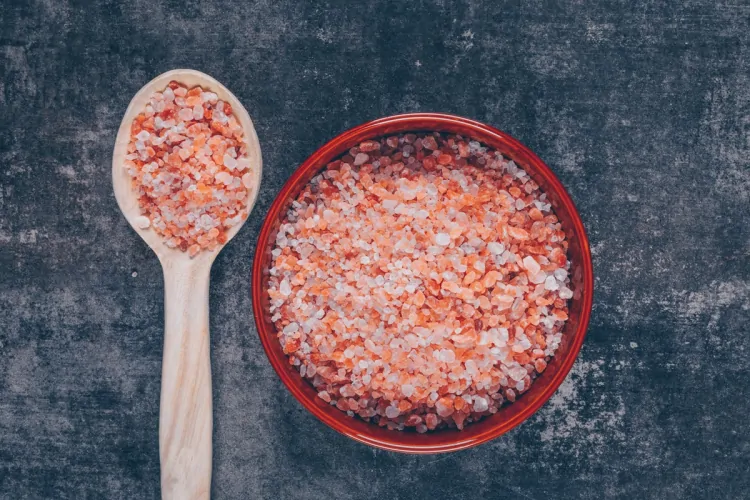Global Market Dynamics: Understanding the World of Himalayan Pink Rock Salt Trade
Explore the evolving landscape of Himalayan pink rock salt exports, from global market trends and regulatory challenges to supply chain dynamics and future outlook. Learn how exporters navigate international trade complexities while maintaining quality and sustainability.

In recent years, the business landscape for any Himalayan pink rock salt exporter has become increasingly complex, shaped by evolving consumer preferences, regulatory changes, and global market forces. Let's dive into the fascinating world of this unique mineral and explore the challenges and opportunities that define its international trade.
The Changing Face of Global Demand
Consumer Awareness and Market Growth
The rising interest in natural and mineral-rich products has transformed how a Himalayan pink rock salt exporter approaches international markets. Health-conscious consumers are increasingly seeking out alternative salt options, driving demand across North America, Europe, and Asia-Pacific regions. This shift isn't just about table salt anymore – it's about premium culinary experiences, wellness products, and even therapeutic applications.
Regional Market Variations
What sells in Tokyo might not work in Toronto. Different markets have distinct preferences for packaging, crystal size, and intended use. While European consumers often prefer fine-ground salt for cooking, the Asian market shows stronger interest in large crystal formations for table grinders. This diversity requires exporters to maintain flexible production and packaging capabilities.
Navigating Regulatory Challenges
Food Safety Standards
Being a Himalayan pink rock salt exporter means dealing with an intricate web of international food safety regulations. Each region has its own set of requirements, from the FDA's strict guidelines in the United States to the European Union's comprehensive food safety protocols. Compliance often involves:
- Regular laboratory testing for mineral content and potential contaminants
- Implementation of HACCP (Hazard Analysis Critical Control Points) systems
- Detailed documentation of mining and processing procedures
- Adherence to specific packaging and labeling requirements
Environmental Considerations
Sustainable mining practices have become crucial for long-term success. Modern Himalayan pink rock salt exporters must balance commercial interests with environmental responsibility. This includes:
- Implementing responsible mining techniques
- Managing waste and byproducts effectively
- Ensuring minimal impact on local ecosystems
- Maintaining transparent supply chains
Supply Chain and Operational Hurdles
Mining and Production Challenges
The extraction process remains largely traditional, requiring skilled workers and careful handling to maintain the salt's natural properties. Key operational challenges include:
- Limited mining seasons due to weather conditions
- Need for specialized equipment and expertise
- Balance between mechanization and quality preservation
- Worker safety and training requirements
Logistics and Transportation
Moving salt from the Himalayan regions to international markets presents unique challenges:
- Complex transportation routes from remote mining locations
- Humidity control during storage and shipping
- Cost-effective packaging solutions for different market segments
- Managing inventory across multiple international warehouses
Quality Control Measures
Maintaining consistent quality across shipments requires:
- Regular mineral content analysis
- Color grading systems
- Size classification processes
- Contamination prevention protocols
Market Competition and Price Pressures
Dealing with Market Saturation
The increasing number of players in the market has led to:
- Price competition affecting profit margins
- Need for product differentiation
- Importance of building strong brand identity
- Focus on value-added services
Authentication and Counterfeit Prevention
With the premium pricing of authentic Himalayan pink rock salt, the market faces challenges with:
- Counterfeit products flooding certain markets
- Need for authentication systems
- Education of buyers about genuine product characteristics
- Implementation of traceability measures
Future Outlook and Adaptation Strategies
Technology Integration
Modern export operations are increasingly embracing digital solutions:
- Blockchain for supply chain transparency
- Online quality control systems
- Digital documentation and compliance tracking
- E-commerce integration for direct-to-business sales
Sustainable Practices
Looking ahead, successful exporters are focusing on:
- Renewable energy use in processing facilities
- Eco-friendly packaging solutions
- Water conservation in mining operations
- Community development programs in mining regions
Market Diversification
Smart operators are exploring:
- New geographical markets
- Product line expansions
- Value-added processing services
- Alternative uses for pink salt in industrial applications
The path forward for businesses in this sector requires a delicate balance between tradition and innovation, maintaining the authentic qualities of this ancient resource while meeting modern market demands. Success in this industry demands not just business acumen but also a deep understanding of geological, cultural, and environmental factors that make Himalayan pink rock salt unique.
As international trade continues to evolve, adaptability and resilience will remain key factors for survival and growth in this competitive market. The future belongs to those who can successfully navigate these complex waters while maintaining the highest standards of quality and sustainability.
Read More: Here
What's Your Reaction?















